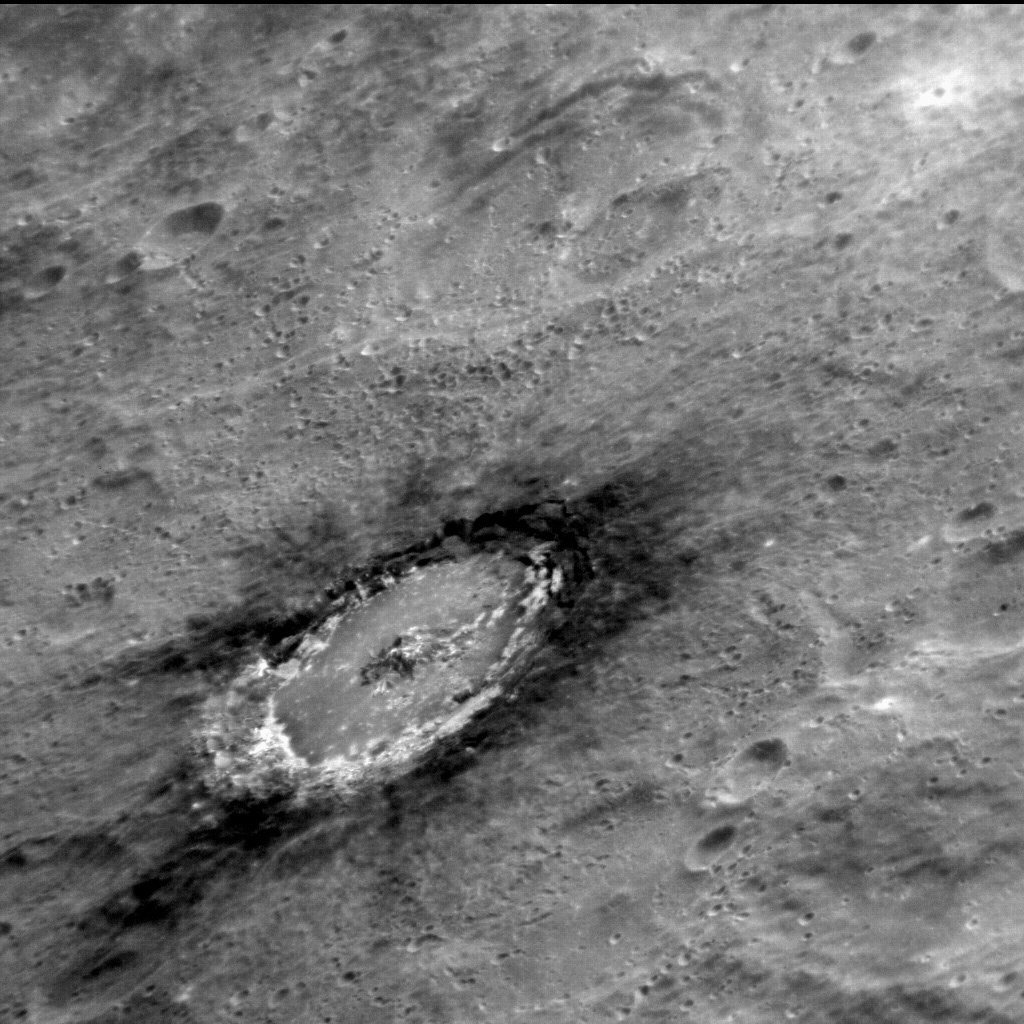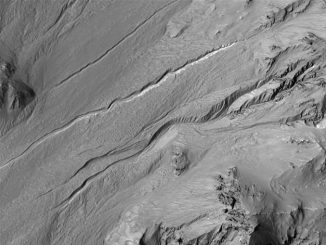
About a year ago, scientists proposed that Mercury’s darkness was due to carbon that gradually accumulated from the impact of comets that travelled into the inner Solar System. Now scientists, led by Patrick Peplowski of the Johns Hopkins University Applied Physics Laboratory, have used data from NASA’s MESSENGER mission to confirm that a high abundance of carbon is present at Mercury’s surface. However, they also have also found that, rather than being delivered by comets, the carbon most likely originated deep below the surface, in the form of a now-disrupted and buried ancient graphite-rich crust, some of which was later brought to the surface by impact processes after most of Mercury’s current crust had formed. The results are published in the 7 March 2016, Advanced Online Publication of Nature Geoscience.
Co-author and Deputy Principal Investigator of the MESSENGER mission, Carnegie’s Larry Nittler, explained: “The previous proposal of comets delivering carbon to Mercury was based on modelling and simulation. Although we had prior suggestions that carbon may be the darkening agent, we had no direct evidence. We used MESSENGER’s Neutron Spectrometer to spatially resolve the distribution of carbon and found that it is correlated with the darkest material on Mercury, and this material most likely originated deep in the crust. Moreover, we used both neutrons and X-rays to confirm that the dark material is not enriched in iron, in contrast to the Moon where iron-rich minerals darken the surface.”
When Mercury was very young, much of the planet was likely so hot that there was a global “ocean” of molten magma. From laboratory experiments and modelling, scientists have suggested that as this magma ocean cooled, most minerals that solidified would sink. A notable exception is graphite, which would have been buoyant and floated to form the original crust of Mercury.
“The finding of abundant carbon on the surface suggests that we may be seeing remnants of Mercury’s original ancient crust mixed into the volcanic rocks and impact ejecta that form the surface we see today. This result is a testament to the phenomenal success of the MESSENGER mission and adds to a long list of ways the innermost planet differs from its planetary neighbours and provides additional clues to the origin and early evolution of the inner Solar System,” concluded Nittler.



